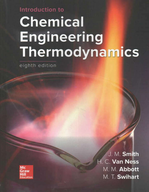?If U is considered a function of T and P, the “natural” heat capacity is neither
Chapter 6, Problem 6.3(choose chapter or problem)
If U is considered a function of T and P, the “natural” heat capacity is neither \(C_{V}\) nor \(C_{P}\), but rather the derivative \((∂ U / ∂ T)_{P}\) . Develop the following connections between (∂ U / ∂ T ) P , \(C_{P}\), and \(C_{V}\):
\((\frac {∂U}{∂T})_{P} = C_{P} − P (\frac {∂V}{∂T})_{P}= C_{P} − βPV\)
\(= C_{V} + [ T(\frac {∂P}{∂T})_{V}− P ] (\frac {∂V}{∂T})_{P}= C_{V} + \frac {β}{κ} ( βT − κP ) V\)
To what do these equations reduce for an ideal gas? For an incompressible liquid?
Text Transcription:
C_V
C_P
(∂ U / ∂ T)_P
(∂U / ∂T)_P = C_P − P (∂V/∂T)_P= C_P − βPV
= C_V + [ T(∂P/∂T)_V− P ] (∂V/∂T)_P= C_V + β/κ ( βT − κP ) V
Unfortunately, we don't have that question answered yet. But you can get it answered in just 5 hours by Logging in or Becoming a subscriber.
Becoming a subscriber
Or look for another answer
